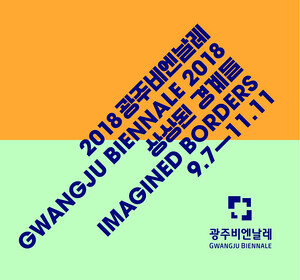September 7–November 11, 2018
The 66-day journey of the 2018 Gwangju Biennale, Imagined Borders, has come to a close. With 163 artists from 42 countries, curated into seven exhibitions by 11 curators, this year’s Gwangju Biennale showcased a new paradigm with the diversity and dynamics of contemporary art. Featuring over three hundred works exploring the concept of contemporary borders, this year’s biennale suggested a new aesthetic methodology and curatorial structure.
This year, the biennale operated in various locations spread throughout Gwangju. The main exhibitions were showcased in two locations, including the Gwangju Biennale Exhibition Hall in Yongbong-dong and extended to the Asia Culture Center. International institutions participated in the Pavilion Project, exhibiting work at local museums and art centers, drawing attention to Gwangju’s own art scene. Furthermore, this biennale’s use of historic sites such as the May 18 Memorial Hall and the GB Commission’s installations at the former Armed Forces Gwangju Hospital have received international recognition in its site-specific uniqueness. Over 66 days, this year’s biennale has welcomed a total number of 318,000 visitors, a 21% increase since the previous iteration in 2016.
Some notable press clips include a quote from Jane Ure Smith from the Financial Times noting the diversity of this year’s biennale: “Two-thirds of the 163 artists participating in the Gwangju Biennale’s 12th edition come from Asia, and Koreans figure strongly among them. Where the Biennale moves outside the region, it is mostly to showcase the work of artists from non-first world countries, including Cuba, Brazil and Lebanon… the notion of a border may be used in many different ways, but both across exhibitions and within each one, the idea is never far away.”
Hili Perlson published a first look at the biennale on Artnet, in which she described the exhibitions as “extremely rewarding,” and selected Aernout Mik’s work in the May 18 Memorial Hall as a “standout.”
Louise Benson of Elephant Magazine commented on the timeliness of the thematic discussion. “In an era of shifting political and cultural borders, when global migration is more prevalent than ever, it is an apt moment to reflect on the freedoms and restrictions of movement for people around the world… Each [curator] takes a distinct perspective, spanning tradition and modernity, personal and political, to form a shifting, restless portrait of imagined borders and a biennial that demands attention on an international platform.”
As a closing event, the Gwangju Biennale presented the Archive Lounge Program curated by David Teh in Exhibition Hall 5. With its simple but flexible furnishings, the lounge was designed to double as an informal studio for a new collaboration initiated by Ho Tzu Nyen, featuring the transnational noise music group Far East Network, and Korean vocalist Park Minhee. During the biennale’s closing weekend in November, the artists conducted “open rehearsals” for a new ensemble performance based on the wartime philosophical debates of Japan’s Kyoto School. These live sessions were interspersed with seminars exploring the themes of abstraction and regionalism in Asian cultural history, including Extreme Noise and Greater Asias Forum. The Archive Lounge program was organized partially in collaboration with KADIST and with the generous support of Fundación Almine y Bernard Ruiz-Picasso para el Arte.
The Gwangju Biennale Foundation thanks all the participating curators and artists, institutions and supporters who helped make this edition a success.
For enquiries please contact:
Bella Jung
T +82(0)62 608 4221 / bellajung [at] gwangjubiennale.org



